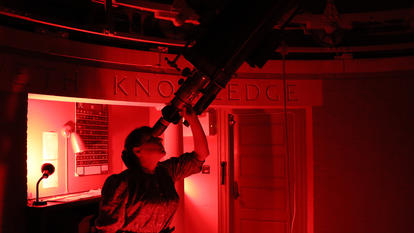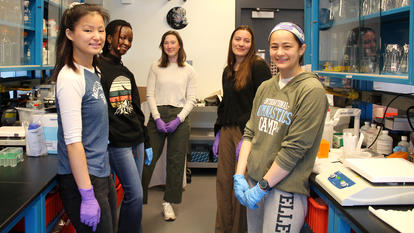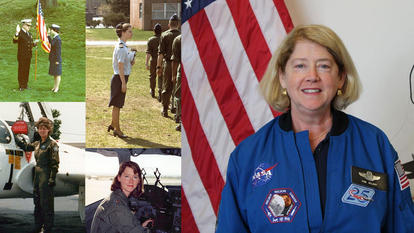Wellesley Astrophysicist Who Worked on NASA’s Cassini Mission Reflects on Its Impact

Since 1990, Wellesley’s Richard French has been studying Saturn as a leading team member of NASA’s Cassini mission. Today, September 15, the spacecraft that has orbited the universe’s giant ringed planet for 13 years will crash into it in a fiery (but very much planned) death, concluding the mission that NASA has called one of its most successful in the history of space exploration.
French, Wellesley’s Louise Sherwood McDowell and Sarah Frances Whiting Professor of Astrophysics and professor of astronomy, served as principal investigator for Cassini’s Radio Science Subsystem team. Daily Shot writers caught up with French, who will be watching the grand finale live from the NASA Jet Propulsion Laboratory in California. He reflected on this extraordinary experience, from the discovery of underground oceans on several of Saturn’s moons to the role that Wellesley played—and will continue to play—in uncovering the mysteries of our solar system.
Q: You're going to be in the Jet Propulsion Laboratory press room when the final signals come in from Cassini. What are you anticipating?
A: It will be exciting and emotional to witness the final moments of the Cassini mission—we’ll all be watching a screen showing the radio signal being received from the spacecraft a billion miles away as it plunges into Saturn. We can predict to within a few seconds when the signal will disappear as the spacecraft begins to tumble and break apart in Saturn’s atmosphere, so there will be an agonizing sense of anticipation and inevitability as we witness the destruction of a marvelous spacecraft that has revealed so much about Saturn and the solar system.
I expect to be cheering at the many accomplishments of the mission and sad to see the end of decades of working closely with scientists and engineers around the world to coax this spacecraft into doing its best. There will be tears and cheers, for sure!
Q: What were some of the most surprising findings from the radio science experiments, for which you were principal investigator?
A: A key radio science experiment provided the most accurate test of Einstein’s theory of general relativity, a record that still stands more than a decade later. We’ve also discovered underground oceans in several of Saturn’s moons, based on their gravitational fields that are measured using our instrument. We’ve bounced radio waves off of the surface of lakes of methane and ethane on Saturn’s moon, Titan, and found astonishingly complex and detailed structure in Saturn’s rings and atmosphere.
Q: What’s next for NASA/space exploration? How do you see Wellesley contributing?
A: NASA has ambitious plans for future missions to explore the solar system and beyond, from Mars to planets around other stars. At Wellesley, members of the astronomy and physics departments conduct NASA-sponsored research with the Hubble Space Telescope and other instrumentation to study craters on Mars and the moon, the color of Saturn’s rings, the nature of planets around other stars, asteroids in our solar system; to investigate the quantum mechanical properties of planetary atmospheres; and to search for the mysterious dark matter that permeates the universe. Our students have opportunities to conduct astronomical research with our on-campus telescopes, with NASA support. Looking to the future, we plan to install a new research-grade telescope in the next year or so, and to participate in future space missions. This is a wonderful time to study astronomy!



